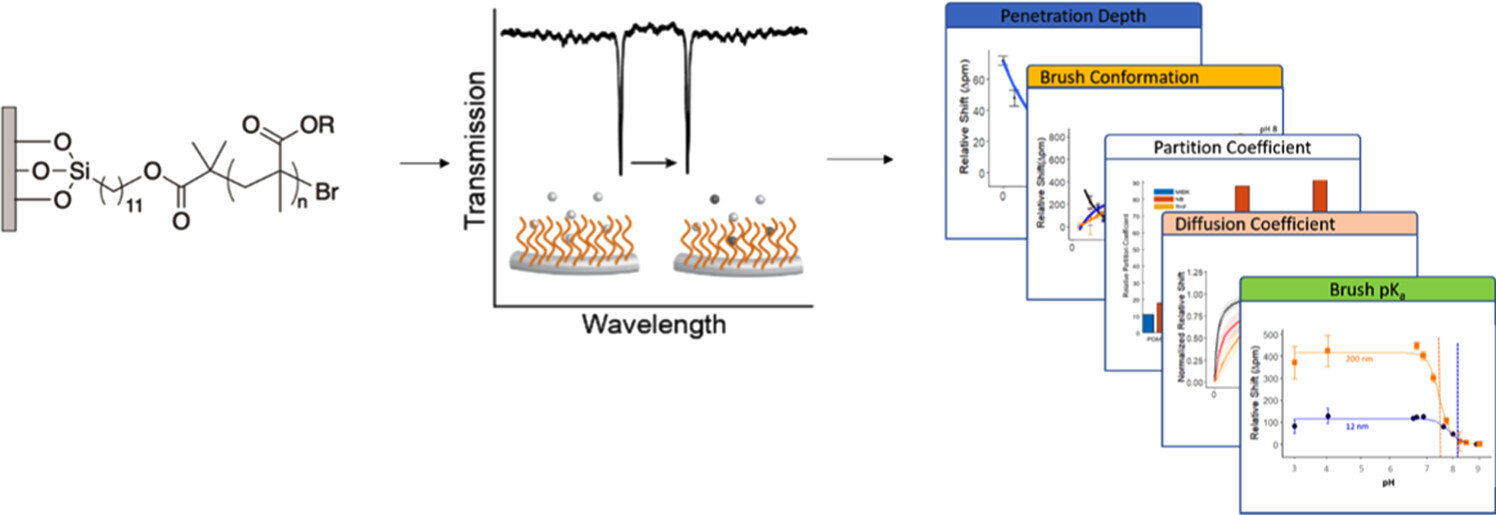Real-Time Measurement of Polymer Brush Dynamics Using Silicon Photonic Microring Resonators: Analyte Partitioning and Interior Brush Kinetics
Abstract
Polymer brushes are found in biomedical and industrial technologies, where they exhibit functionalities considerably dependent on polymer brush–solvent–analyte interactions. It remains a difficult challenge to quickly analyze solvent-swollen polymer brushes, both at the solvent–polymer brush interface and in the brush interior, as well as to monitor the kinetics of interaction of solvent-swollen brushes with key analytes. Here, we demonstrate the novel use of silicon photonic microring resonators to characterize in situ swollen polymer brush–analyte interactions. By monitoring resonant wavelength shifts, we find that brush–solvent–analyte interaction parameters can be extracted from a single set of data or from successive analyte introductions using a single brush-coated sensor. The partition coefficient of three industrially relevant plasticizers into hydrophobic and hydrophilic brushes was determined and found to be in agreement with known solubility trends. We found that the diffusion coefficient of the plasticizer into the brush decreases as brush thickness increases, supporting a model of a dense inner brush layer and diffuse outer layer. pKa’s of pH-sensitive brushes were determined on the microring resonator platform; upon increasing the dry brush thickness, the pKa for poly(2-dimethylamino ethyl methacrylate) decreased from 8.5 to approach the bulk material pKa of 7.3 and showed dependence on the presence and concentration of salt. These proof-of-concept experiments show how the surface-sensitive nature of the microring resonator detection platform provides valuable information about the interaction of the polymer brushes with the solvents and analytes, not easily accessed by other techniques.

